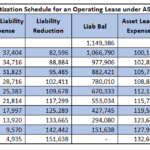Asset protection is an essential financial strategy that can help safeguard your wealth and protect your assets from creditors, lawsuits, and other financial risks. It involves establishing legal structures, such as trusts and LLCs, that provide a layer of protection between you and your assets, allowing you to enjoy the security and peace of mind that comes with knowing your financial future is secure. This article will explain the basics of asset protection, including what it is and why it is important for you to consider implementing it as part of an overall financial strategy.
Overview of Asset Protection: What It Is and Why It’s Important

Asset protection is an important financial concept for anyone looking to protect their wealth. Asset protection is the process of shielding your assets from future claims or liabilities. It can help you protect your money from creditors, lawsuits, and other threats. By protecting your assets, you can ensure that your hard-earned wealth remains in your family and is protected from outside influences. It can also provide peace of mind by protecting your assets from any future claims or liabilities. Asset protection is especially important for high-net-worth individuals, businesses, and families who need to secure their finances. Investing in asset protection is an important step towards preserving your wealth and ensuring that it is protected in the future.
Types of Asset Protection Strategies

Asset protection is all about safeguarding your financial assets from various risks. It involves taking steps to protect your money, property, and other assets from creditors, lawsuits, and other potential losses. There are many different types of asset protection strategies available to individuals, businesses, and organizations. One of the most common strategies is to use trusts and other legal structures to hold and protect assets. Another popular strategy is to use offshore asset protection plans and accounts to shield assets from taxation and legal liabilities. Asset segregation is also a popular strategy which involves separating assets into different legal entities to minimize the risk of losing them to creditors or legal actions. Finally, asset insurance is another method of asset protection that provides protection against loss or damage to physical assets. Each of these strategies has its own set of advantages and disadvantages, so it is important to do your research and choose the one that works best for you.
How to Effectively Protect Your Assets

Protecting your assets is essential for any financial security. There are a few key ways to ensure your assets are secure and protected. First, it is important to create an emergency fund. This fund should always have enough money to cover your expenses for at least three months in case of an unexpected event. Second, you should always have assets in a variety of accounts with different institutions. This ensures that if one account is compromised, your other assets will still remain safe. Third, it is important to keep your financial information secure by avoiding scams, using up-to-date software, and never sharing financial details. Finally, you should also consider purchasing insurance to protect yourself from potential risks. By following these steps, you can ensure that your financial assets are secure and protected from any potential threats.
Benefits of Asset Protection

Asset protection is a great way to ensure financial security and peace of mind. With it, you can protect your assets from creditors, lawsuits, and other potential liabilities. By taking the time to plan your asset protection strategy, you can ensure that any assets you have remain secure and will not be taken away in the event of financial hardship. The benefits of asset protection are numerous and can include the ability to keep your assets safe from creditors, the ability to preserve your family’s wealth, and the ability to pass down assets to future generations. Additionally, asset protection can help you avoid the costly fees associated with legal battles and bankruptcy proceedings. With these benefits in mind, it’s important to consider asset protection as part of your overall financial plan.
Common Asset Protection Mistakes to Avoid

It’s important to be aware of the common asset protection mistakes that people make when trying to protect their assets. One of the biggest mistakes is not having enough liability insurance. You should always make sure to have enough insurance to cover your assets in case of an accident or lawsuit. Another mistake is not setting up an LLC or other business entity to protect your assets from creditors. You should always make sure to research the best legal entity for you and set it up properly. Lastly, another mistake is not properly titling assets. If you are trying to protect assets, you should make sure that they are titled properly in the name of the entity you set up to protect them. If you’re not careful, you could end up with assets that are still vulnerable to creditors. Avoid these mistakes and make sure to properly protect your assets!




